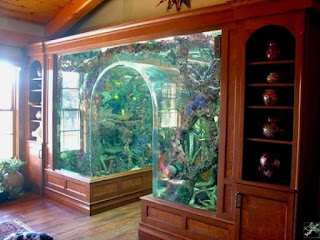Simple and Easy Woodworking Projects with Detailed Plans
Woodworking offers a rewarding and accessible hobby for individuals of all skill levels. The satisfaction derived from crafting functional and aesthetically pleasing items from raw materials is unparalleled. This article provides detailed plans for several simple woodworking projects, perfect for beginners and those seeking straightforward yet satisfying endeavors. These projects require minimal tools and materials, ensuring an accessible entry point into the world of woodworking.
Project 1: A Simple Wooden Coasters Set
This project introduces fundamental woodworking techniques such as measuring, cutting, and sanding. The resulting coasters are both practical and decorative, ideal for protecting furniture surfaces.
Materials Required:
- Four pieces of 4" x 4" hardwood (e.g., maple, oak, or cherry) – approximately ½ inch thick
- Sandpaper (various grits, from 100 to 220)
- Wood glue
- Wood finish (e.g., polyurethane, varnish, or beeswax)
- Measuring tape
- Pencil
- Hand saw or jigsaw
- Clamps
- Cloth rags
Instructions:
- Cut the wood: Using a hand saw or jigsaw, carefully cut each piece of wood into a 4-inch square. Ensure clean, square cuts for a professional finish. Accuracy in this step is crucial for a cohesive final product.
- Sand the edges: Sand all four edges of each square, starting with coarser grit sandpaper (100 grit) and progressively moving to finer grits (150, then 220) for a smooth finish. This removes any rough edges and prepares the wood for finishing.
- Apply the finish: Once sanded, apply a thin, even coat of your chosen wood finish. Allow ample drying time as specified by the manufacturer's instructions. Multiple thin coats are preferable to one thick coat to avoid drips and ensure even coverage. Allow for thorough drying between coats.
- Optional: Add felt pads: For added protection to your furniture, glue small felt pads to the bottom of each coaster. This prevents scratching and provides better grip.
Safety Note: Always wear safety glasses when using power tools and exercise caution when handling sharp tools.
Project 2: A Rustic Key Holder
This project utilizes reclaimed wood for a unique and environmentally conscious approach. It's a functional piece that adds character to any entryway.
Materials Required:
- A piece of reclaimed wood (approximately 6" x 12" x 1") – the character of the wood adds to the rustic aesthetic
- Four cup hooks
- Screws suitable for the wood type
- Sandpaper (various grits)
- Wood stain or paint (optional)
- Screwdriver
- Drill (if using screws that require pre-drilling)
Instructions:
- Prepare the wood: Sand the reclaimed wood to remove any splinters or rough edges. Clean the wood thoroughly to remove any dust or debris.
- Optional: Stain or paint: If desired, apply a wood stain or paint to enhance the appearance of the wood. Allow ample drying time.
- Attach the hooks: Mark the positions for the cup hooks, ensuring they are evenly spaced. Pre-drill pilot holes if necessary, then securely attach the hooks using the appropriate screws.
Note: The beauty of this project lies in the unique character of the reclaimed wood. Embrace any imperfections and knots for a truly rustic look.
Project 3: A Simple Wooden Shelf
This project provides an opportunity to explore joinery techniques and build a practical storage solution. It's a great introduction to more complex woodworking skills.
Materials Required:
- Two pieces of 1" x 12" hardwood – approximately 12" long (for supports)
- One piece of 1" x 12" hardwood – approximately 24" long (for the shelf)
- Wood glue
- Wood screws
- Sandpaper
- Wood finish (optional)
- Drill
- Screwdriver
- Measuring tape
- Pencil
- Clamps
Instructions:
- Prepare the wood: Sand all pieces of wood to achieve a smooth surface.
- Assemble the shelf: Position the shorter support pieces vertically at each end of the longer shelf piece. Apply wood glue to the joining surfaces and secure with screws. Ensure the support pieces are level and properly aligned.
- Optional: Finish the shelf: After the glue has dried, apply a wood finish for protection and aesthetic enhancement.
Tip: For added strength and stability, consider using pocket hole joinery. This technique involves drilling angled holes and inserting screws for a strong, concealed joint. This requires a specialized jig, readily available at most hardware stores.
These three projects offer a starting point for a fulfilling woodworking journey. As your skills develop, you can explore more complex projects, incorporating advanced techniques and designs. Remember always to prioritize safety and take your time to ensure accuracy and precision in your work. The satisfaction of creating something beautiful and useful with your own hands is a rewarding experience.


















